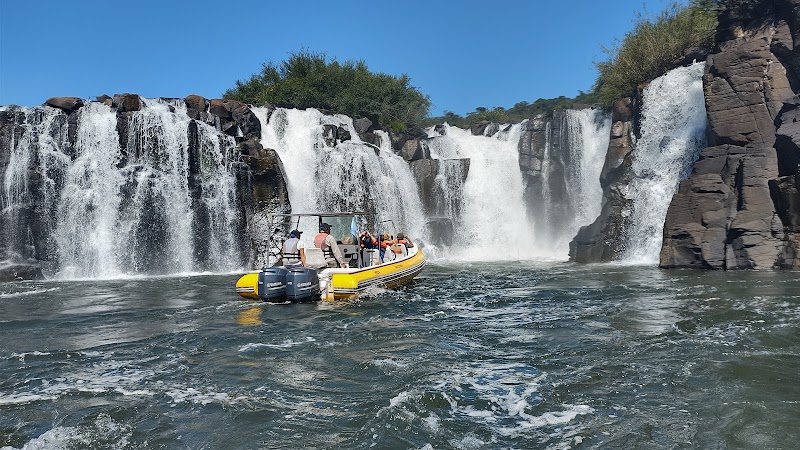
Oberá Immigrant Festival: A Vibrant Journey into Misiones’ Cultural Heart
Experience the lively Oberá Immigrant Festival in Misiones, a vibrant celebration of the region's diverse immigrant roots. From traditional cuisine and music to artisan crafts, this festival offers both rich culture and practical experiences for travelers seeking an immersive yet easy-to-navigate cultural adventure.
Plan for Full Days
The festival features events spread over various pavilions and stages, requiring a full day for optimum experience. Wear comfortable shoes and pace your visit to avoid fatigue.
Stay Hydrated
July brings cool but dry conditions. Carry a reusable water bottle and drink regularly as you explore the outdoor spaces between pavilions.
Use Local Transport
Oberá’s festival venues are well connected by local buses and taxis, which can save walking time and improve comfort between distant sites.
Capture the Moments
Bring a camera or smartphone with ample battery and memory. The cultural diversity and colorful events offer plentiful photography opportunities.
Oberá Immigrant Festival: A Vibrant Journey into Misiones’ Cultural Heart
The Oberá Immigrant Festival in Misiones brings a compelling blend of heritage and celebration to the vibrant city of Oberá each July. This annual event spans roughly ten days, transforming the city into a lively mosaic of cultural exhibitions, traditional foods, music, and dance from various immigrant communities that shaped the region. With over 30 ethnic groups represented—ranging from European settlers to Middle Eastern and Asian diasporas—the festival pulses with an energy that is both welcoming and enriching.
Walking through Oberá during the festival, you encounter streets alive with the aromas of German sausages mingling with the spices of Syrian cuisine. Music and folk dance performances occupy several stages scattered throughout the heart of the city, inviting visitors to experience a living archive of customs and stories. Each pavilion functions as a cultural emissary: flags flutter proudly, costumes express histories, and interactive exhibits offer practical insight into languages, crafts, and regional traditions.
The festival’s organized schedule is a balance of structured events and spontaneous moments—artisan markets invite you to try crafts and hand-made goods, while cooking demonstrations highlight recipes passed through generations. For practical planning, the event occurs primarily in July, coinciding with cooler, drier weather ideal for extended outdoor exploration. Arrival early in the day ensures you beat crowds and get the full benefit of workshops, tastings, and performances.
Transportation to Oberá is convenient via Posadas International Airport, around 100 km to the south. Staying within the city is straightforward, with numerous lodgings close to festival venues. Comfortable footwear is a must: the city’s cobblestone streets and expansive event areas require steady footing as you navigate between cultural pavilions.
Don’t miss the parade that vividly portrays immigrant histories through colorful floats and costumes, offering a moving visual story alongside the rich sensory experience. The festival maintains its practical edge with clear signage and helpful guides, making it accessible to casual visitors and cultural aficionados alike.
In all, Oberá Immigrant Festival is more than a celebration—it’s an active engagement with the diverse forces that have built one of Misiones’ most dynamic communities. It calls on visitors to listen, taste, and move along with a community fiercely protective of its heritage and open to sharing it widely.
Nearby Trips
All Adventures
Boat Charters
Water Activities
Adventures near Oberá, Misiones
Discover the unique and memorable adventures that make Oberá, Misiones special.
Frequently Asked Questions
What is the historical significance of the Oberá Immigrant Festival?
The festival honors the diverse immigrant groups that settled in Misiones, celebrating their cultural contributions through food, dance, and crafts, essential to understanding the region’s identity.
Are there opportunities to try local foods during the festival?
Yes, each pavilion offers traditional dishes from distinct immigrant communities, making it a practical way to taste cultural heritage alongside performances and exhibitions.
Is the festival family-friendly?
Absolutely. The event includes activities and crafts geared toward children, making it a welcoming environment for all ages.
How crowded does the festival get, and when is the best time to visit during the day?
Mornings and early afternoons are less crowded. Arriving early helps avoid peak hours and allows leisurely participation in workshops and tastings.
What environmental considerations are there when attending?
Visitors are encouraged to use public transit or shared transportation and minimize waste by using provided recycling stations throughout event areas.
Are there lesser-known spots within the festival to explore?
The smaller pavilions representing less prominent immigrant groups often provide intimate and less crowded experiences, ideal for deeper cultural connection.
Recommended Gear
Sturdy Walking Shoes
Choose shoes with good support for cobblestone streets and extended walking across festival grounds.
Reusable Water Bottle
Stay hydrated throughout your visit, especially when outdoors between pavilions.
Light Jacket
Even in mild winter, evenings can be chilly; a light jacket ensures comfort after sunset.
Portable Phone Charger
The festival’s long days can drain batteries; a charger keeps your devices ready for photos and navigation.
Local Insights
Hidden Gems
- "The Japanese pavilion features a traditional tea ceremony demonstration often missed by larger crowds."
- "The local forested park near the city center offers serene breaks from the bustling festival."
Wildlife
- "Native birds such as toucans and parakeets frequent nearby green spaces, providing natural spectacle alongside cultural events."
History
"Oberá’s roots trace back to European and Middle Eastern immigrants in the early 20th century, who transformed the region into a rich cultural hub that the festival celebrates."
